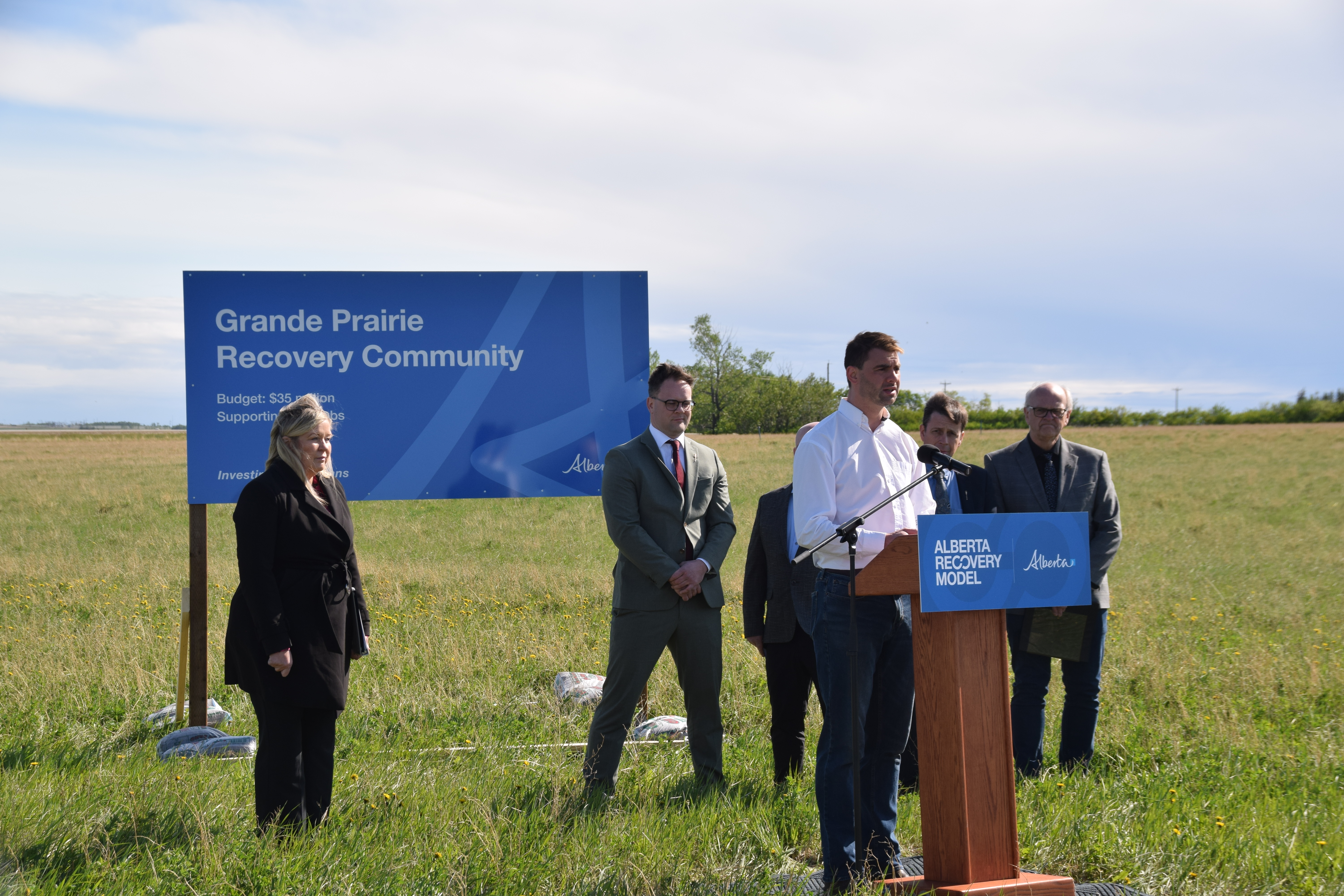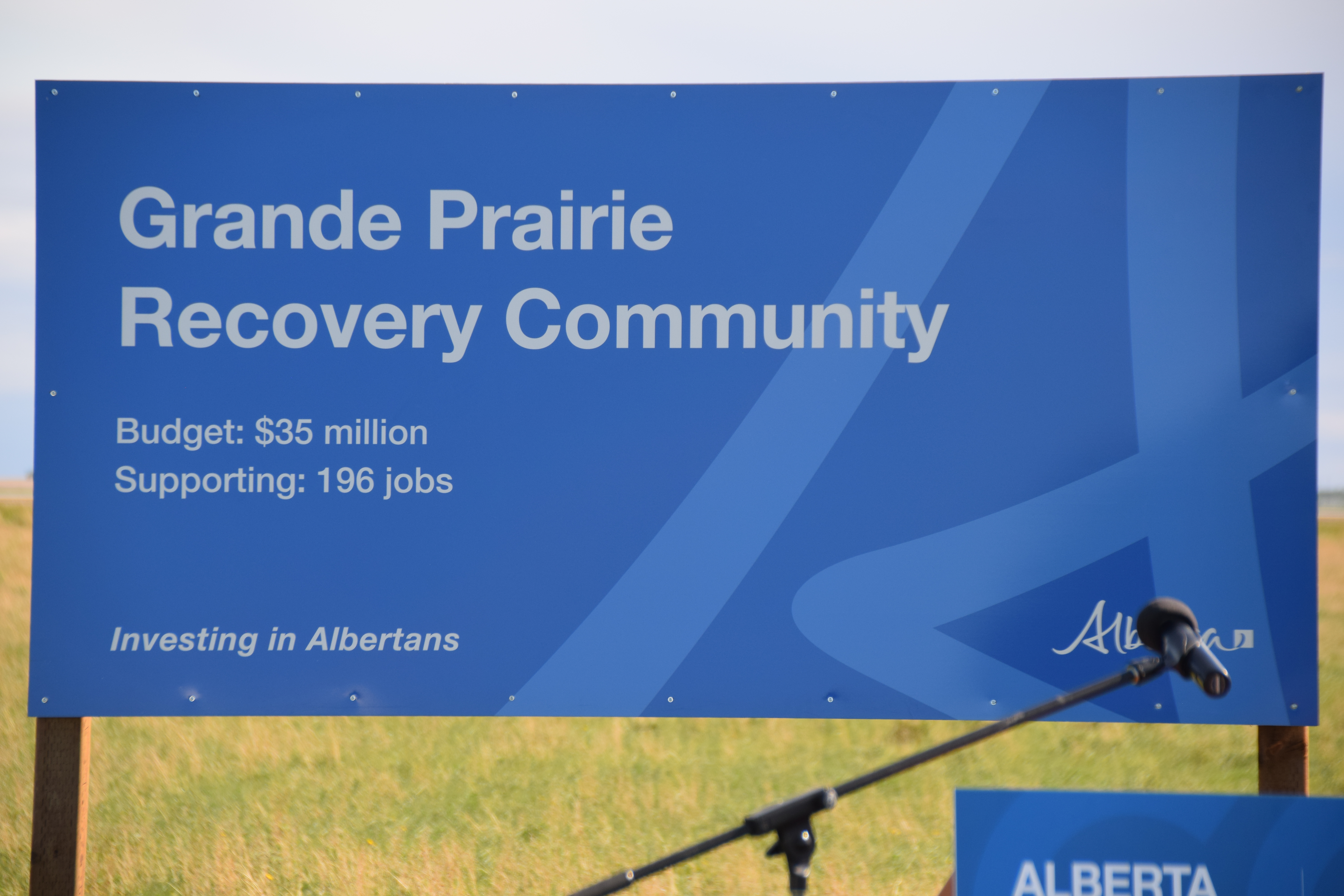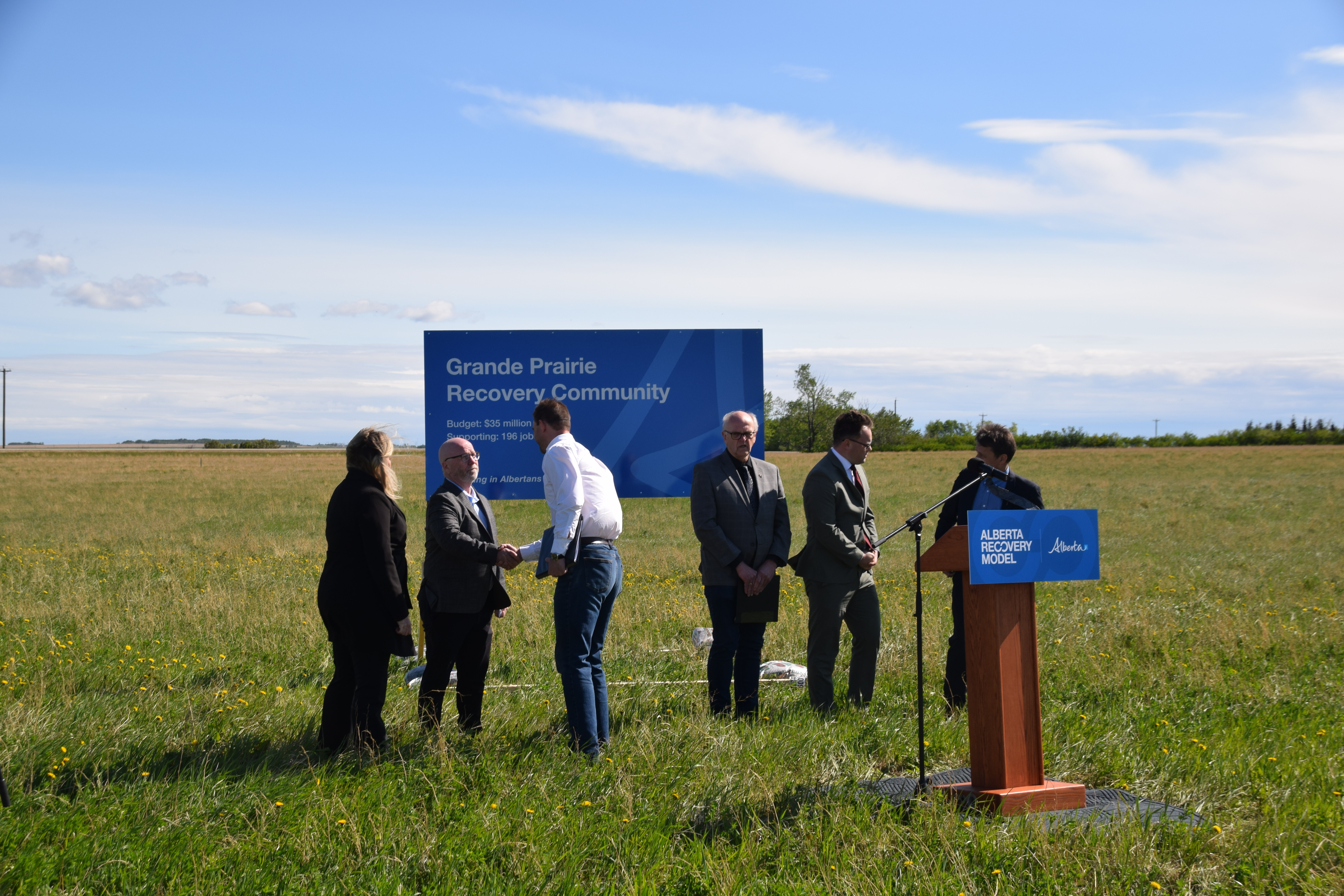
Alberta government announces $35 million addiction facility in Clairmont
The Alberta Government says it addressed one of its “key focuses” to the Alberta Recovery Model on Friday, May 31.
After doing a tour of Grande Prairie’s addiction and homelessness facilities almost a year ago; Minister of Mental Health and Addiction Dan Williams, alongside multiple local and provincial officials, announced $35 million in funding for a 50-bed long-term addiction recovery facility, in Clairmont.
“The tour helped me understand exactly what capacity we have right now and what demands there are on it. There’s always been a plan to have a facility in the northwest, but the tour last year really cemented it for us,” said Williams.
 Photo Courtesy EGP Staff
Photo Courtesy EGP Staff
